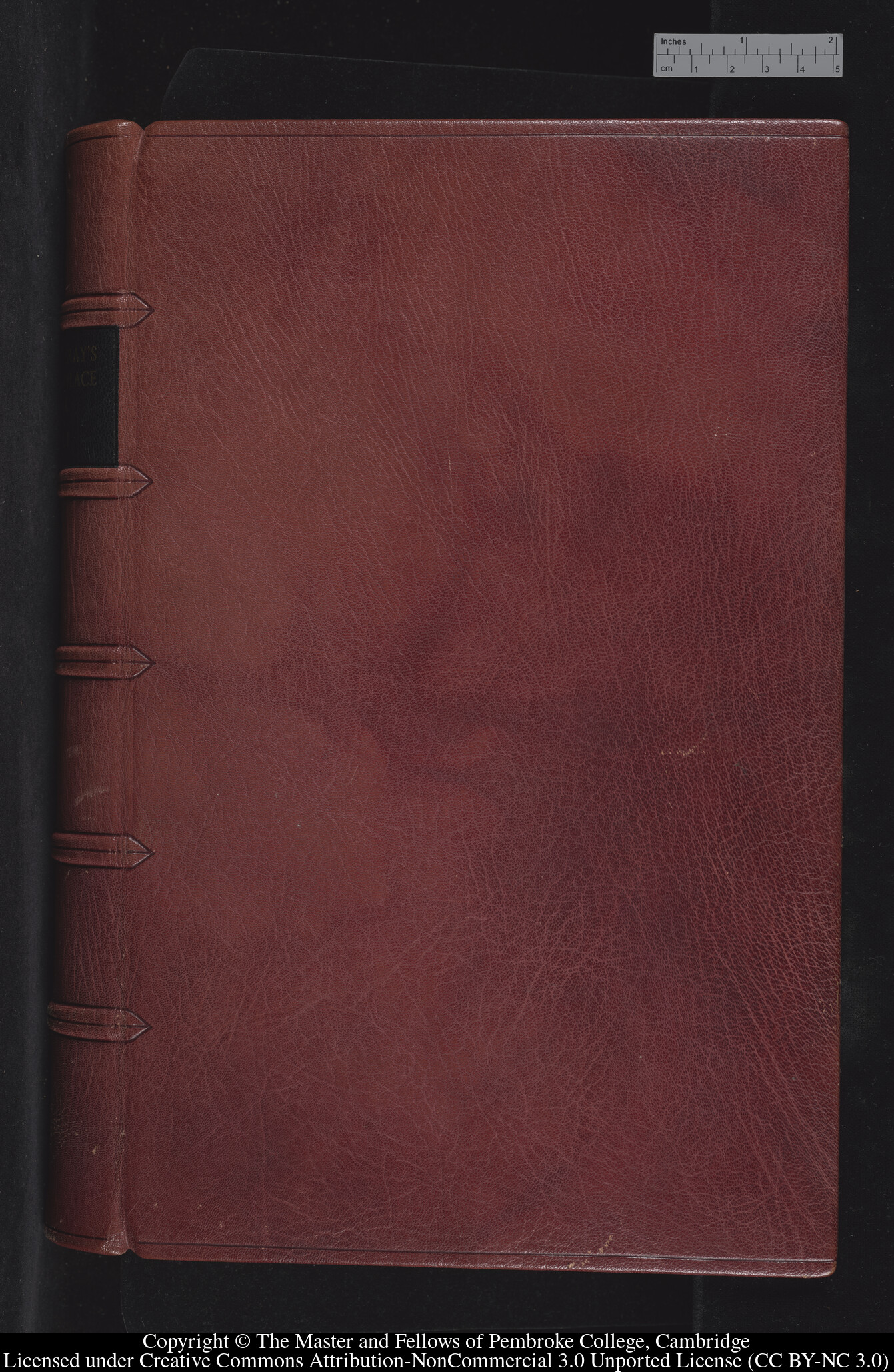Scope and Contents
The collection consists of Thomas Gray's commonplace books and diaries (1755 and 1760) as well as letters from Gray to George Ashby, George Birkett, James Brown and Horace Walpole. There is also other Gray manuscript material including school work and miscellaneous notes. The College has also collected images of Gray and research into him (GBR/1058/GRA/6 and 8).
Dates
- Creation: 1725 - 2007
Creator
Biographical / Historical
Thomas Gray was born in London in 1716. He attended Eton College School before coming up to Peterhouse College in Cambridge in 1734 where he was awarded the Cosin scholarship. The following year, in November, he was admitted to the Inner Temple. He left Cambridge in 1738, having not taken his BA, and in 1739 embarked upon a tour of Europe with his friend from Eton, Horace Walpole (1717–1797). He returned home in 1741, after a disagreement with Walpole. Gray's father died later the same year. In the autumn of 1742, following the death of his friend Richard West, Gray returned to Cambridge to study civil law. He would remain at Cambridge, bar one prolonged absence, for the rest of his life. He returned to his old College, Peterhouse, as a Fellow Commoner, but looked to Pembroke College for company. Once family and financial pressures lifted he ceased to attend his law lectures and began to write poetry again. He was admitted Fellow Commoner at Pembroke on 6 March 1756 after an incident at Peterhouse in which some undergraduates gave false alarm of fire. In 1759 he spent a period of time in London, but returned to his rooms at Pembroke in November 1761. In 1768 Gray was offered, and accepted, the chair of modern history at Cambridge. However, his health was deteriorating and in July 1771 he passed away in his rooms at Pembroke. Most famous for his poem 'Elegy written in a country church yard', he was a polymath with interests in history, architecture, languages, botany and natural history.
Extent
0.18 cubic metre(s)
Language of Materials
English
Latin
Greek, Ancient (to 1453)
Japanese
Sinhala; Sinhalese
External Documents
Existence and Location of Copies
Part of the collection was microfilmed by Adam Matthew Publications. The Commonplace Books were digitised by the Cambridge University Library Digital Content Unit in July 202; please see GBR/1058/GRA/1 for further information.
General
This catalogue references, where possible, the Thomas Gray Archive and the cataloguer is extremely grateful to the Thomas Gray Archive for the information it has provided to facilitate cataloguing. Reference: Huber, Alexander, ed. Thomas Gray Archive. Thomas Gray Archive, 13 Sep 2021. References are also given to the 'Index of English Literary Manuscripts' Volume III, Part 2 (1989) where possible.
- Date
- September 2021
- Language of description
- English
- Script of description
- Latin
Revision Statements
- 02/01/2024: Addition of GBR/1058/GRA/7/4/2
- 16/02/2024: Addition of GBR/1058/GRA/8/1/2
Repository Details
Part of the Pembroke College Library and Archive Repository
Archivist
Pembroke College
Cambridge CB2 1RF United Kingdom
+44 (0)1223 764151
library@pem.cam.ac.uk

